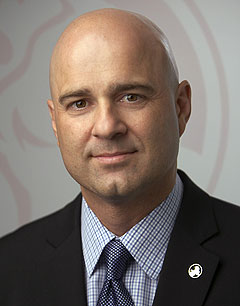Parts weren't made to be easy
BY IAN PORTER | 12th Sep 2012

But chairman and managing director Mike Devereux also reassured the supplier network about Holden’s attitude, pointing out that Holden sometimes puts the financial health of the supplier network ahead of its own profit interests.
Mr Devereux also said GM no longer believes the Australian dollar will return to an exchange rate with the US dollar anywhere near historic levels in the near future.
In a decision that hurts its export pricing, the company now bases all its business plans on the assumption that the Aussie dollar will stay around the parity mark with the US dollar. The current strong level of exchange for the dollar has cut a major swathe through Australian manufacturing sector in the last three years.
Mr Devereux agreed that the high currency must be having an adverse effect on Holden’s local suppliers.
“I think there will continue to be challenges in the supply base brought on by the value of the dollar,” he said.
The best defence for parts-makers was to avoid the easy stuff.
“If someone wants to make something in Australia, my advice is don’t make things that are easy to make,” he said.

It should not be assumed that the local content of Australian cars was declining because of the strong Aussie dollar, which made imported parts cheaper.
“I don’t know it’s fair to assume that,” he said. “Whether its electricity input costs or the value of the dollar, the economics of the supply base is going to be driven by how efficiently they can make things.”In fact, he said Holden sometimes made decisions favoring local suppliers based on more than just the cheapest price for a part.
“We bias to buying locally whenever we can,” he said. “We make decisions to support Australian businesses every single week that, in some cases, hurt our profitability but we know there is an ecosystem we need to support.
“So our decisions are not purely and ruthlessly based on cost.
“We are trying to keep a supply base that is robust and developing over time and I’d say we make the right decisions almost every week and, in some cases, there are definitely long-term decisions that we are making.”The relatively small size of the Australian parts industry meant original equipment makers had to keep the supply base’s financial health in mind when they made sourcing decisions.
“Doing my job in this country is a little different to my counterpart in China,” Mr Devereux said.
“I have a lot of different concerns that have to weigh into the decisions that we make that have trickle down effects that are not the same kind of decisions made in some other places.
“The game is a little more difficult to play here and when I talk about policy and certainty, all we are looking for is a roadmap and a plan.
“I don’t know how many auto-makers are going to be building cars here three years, five years, 10 years from now.
“I know what my plan is and we will have to stay flexible to what is happening, whether it’s currency or supplier health or total production – all that stuff.
“It makes for an exciting job.”On the currency issue, Mr Devereux indicated GMH had resigned itself to a high Australian dollar for the foreseeable future.
“We must have a business plan for local manufacturing that works at Australian-dollar parity with the United States dollar.”“We are going with what the worst case is.
“There are some that say the dollar could be $US1.10, $US1.20.
“We are not doing our sums at $US1.30 and we are not doing our sums at US70 cents. It’s parity. We have to have a business plan that works.”This is a marked change from 2003, when the company spent $400 million to build the High Feature V6 engine plant that makes all Holden’s V6 engines, as well as some for export to South Korea and China.
The plant was built with a capacity of 240,000 engines a year on the premise that 50 per cent of more of the output would be exported.
At the time the Aussie dollar was languishing below US60 cents, but visiting GM chairman Rick Wagoner said that GM did not expect the currency to stay that low.
For that reason the business case for the engine plant was based on a currency exchange rate of US75 cents, which was the historical average since federal treasurer Paul Keating floated the dollar in 1983.
The decision to incorporate the current value of the dollar into Holden’s business plan may indicate a fundamentalist, no-risk approach by the Detroit-based board of the recently resuscitated American giant.
“We have to make sure we have a business plan that, with a parity dollar, we can have a line of sight to be profitable,” Mr Devereux said.
He dismissed the notion that Holden could ever get to a position where it exported 50 per cent of its output.
“That is a dead business model. It doesn’t work. Because of the value of the currency right now, having a large export profile is a bad idea.”